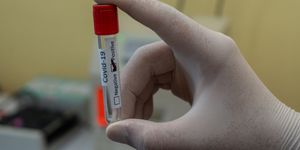E-waste Recycling Processes Emit Synthetic Antioxidants With Possible Health Risks
Electronic waste (e-waste) refers to electronic material that has reached the end of its life and is ready to be recycled or disposed of. This includes computers, T.Vs, phones and more. According to the United Nations, the world produces almost 50 million tons of e-waste annually. And yet, hardly a quarter of this is recycled.
Excessive amounts of e-waste pose significant problems environmentally and for our health (never mind the economic worth of this waste). In the past, manufacturers have incorporated low-weight synthetic phenolic antioxidants into products that contribute to e-waste. These antioxidants have a documented record of being toxic to human cells, a compound used to slow the oxidative process.
More recently, manufacturers of many raw materials for electronics, including plastics, have begun using hindered phenolic antioxidants (HPAs) and “helper” sulfur antioxidants (SAs). HPAs, in particular, are designed to be more effective than synthetic ones and have less potential for “run off” from the product they are integrated in. However, since the introduction of these new chemical compounds, less is known about their potential environmental and health risks.
In response, researchers have studied e-waste factories and the dust they produce to examine whether these new compounds are present in e-waste dust and what, if any, potential risks to humans and the environment may exist. The findings are published in a recent article in the American Chemical Society’s (ACS) Environmental Science and Technology Letters.
Specifically, researchers looked to e-waste recycling centers and the dust produced in the process of recycling e-waste to look for traces of HPAs and SAs. Researchers looked at centers focusing on three types of e-waste recycling: wire and cables, electronic plastics, and general e-waste recycling. With the use of liquid chromatography/tandem mass spectrometry, researchers analyzed dust samples for 24 different types of new HPAs and SAs, finding all types in the dust they analyzed. Wire and cable and electronic plastic recycling had significantly higher concentrations of HPAs in the dust produced than general e-waste recycling.
Researchers highlight that more work is needed to determine the toxicity and potential health risks posed by HPA concentrations in e-waste dust.
Sources: Science Daily; ACS; United Nations








